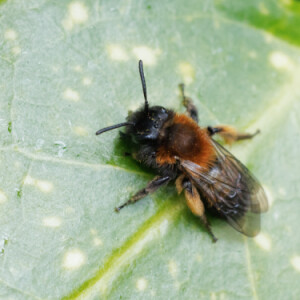Feather-footed
I don't know why the Romans felt that they needed a word to describe the state of being feather-footed, but apparently they did, and 'plumipes' was it. 'Anthophora', I think, is a Greek term for flowering plants. So this little guy is the feather-footed bee of flowering plants - or as we prefer to say, the hairy-footed flower bee. He and his confreres are likely to turn up in my blog many times over the next few weeks, because for me they're the most charming and beautiful of the spring bees. Their long tongues allow them to access the nectar in tubular flowers, and they have a particular liking for pulmonaria, primroses and wallflowers. I like to see them holding on and leaning into the open goblets of my pulmonaria flowers to reach the tubes, but as the season progresses and they have more competition and need to work harder, they will quite often feed on the wing, hovering briefly over a flower and dipping their proboscis into it before zooming off again.
As well as two or three plumpies, I photographed one other solitary bee in the garden today. The handsome creature in my second photo is a female Andrena bicolor, which is always one of the earliest mining bees to appear in spring, and in fact is one of our most successful solitary bees, being relatively unfussy as to either habitat or the flowers from which it forages. It produces two generations per year, the spring brood flying from March to June, and the summer brood from June to August.
The general rule with solitary bees is that the males emerge first. They then work themselves into a lather, patrolling their territory and squabbling with other males, as they all search for emerging females and wait for their chance to mate. This is the current situation with the hairy-footed flower bees: there are at least three in our garden now, all males, and though they're zooming around almost constantly, when they do pause they're less worried than they were initially about having my camera poked in their faces, because they've got more urgent things to think about - so on balance they're easier to photograph. The Andrena bicolor, on the other hand, seems to have got out ahead of her potential suitors, and spent the afternoon sitting around, waiting for a male to turn up. As soon as she has mated she'll begin constructing and provisioning a nest, and that will be her focus for the rest of her life, but until then she's a lady of leisure.


Comments
Sign in or get an account to comment.


